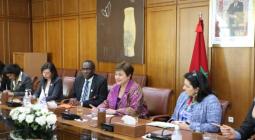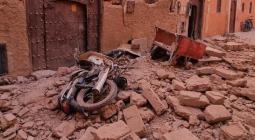Alone Australia returns – this time to wild, treacherous New Zealand: ‘The dangers are upscaled’
Applications to be on the gruelling reality TV hit doubled – but the 10 contestants face all new threats including avalanches and earthquakes
The second season of Alone Australia – despite the nation named in its title – opens with 10 new contestants being dropped by boat into the stark majesty of Te Waipounamu, or New Zealand’s South Island. “It’s like a lost world,” marvels one contestant as the boat drives away, leaving him stranded ashore. “There’s an ancient feel to it,” says another, taking in the tall snow-capped mountains and the smooth expanse of water rippled only by gusts of wind before adding: “It’s kinda scary.”
The first season of Alone Australia was a massive hit for the SBS last year, taking place in the beautiful wilderness of Iutruwita, Tasmania; a setting defined by stumps of trees sticking out from swamps like witches fingers, mossy boulders and hidden Tasmanian devil lairs.
“I’d like to say that Tasmania is ruggedly beautiful and New Zealand is classically beautiful,” says Riima Daher, the show’s executive producer. As the pioneering executive for the Alone format for Australia, it’s Daher’s job to create the perfect conditions for the show to thrive.
“In New Zealand everything is bigger, taller, deeper, wider,” she says. “So the landscape itself is upscaled, and some of the dangers are upscaled with that as well. It’s colder, the weather events can be more drastic. Earthquakes and avalanches are a real threat.”
Apart from the new setting and contestants (though there is one face fans may remember briefly seeing in season one), season two follows the same format we know and love: 10 contestants dropped into the wilderness, completely alone and separated from each other, with only a small number of pre-approved items – such as firestarters, axes and sleepings bags – to hand. With no camera crews or help from the production team, they must fend for themselves, sourcing food, water, shelter and warmth using only their wits. The person who can survive the longest – and handle the overwhelming loneliness – wins A$250,000.
“I don’t think anything prepares you for being out there until you’re out there,” Daher says. “You might know your own land and your own survival experience, but it’s like the plane’s crashing and you don’t know where it’s gonna land. They find out late where they’re going, so there’s absolutely no time to prepare and everyone’s on the same playing field. It’s a shock – no matter what your experience.”
There is one big change this season: participants are permitted to hunt with bow and arrow. With wild pig, possum, tahr and red deer on the South Island, this could change the stakes dramatically.
“I was a super fan of the US series of Alone, so we didn’t want to mess with the format in any way,” Daher says. “But what changes is all of the flavours that you bring to it.
“It’s a different landscape and a different survival culture in Australia. I think we are influenced by the multicultural background that we bring to the series. Australia’s such a young country in some ways, and such an old country in a more important way. So all of the First Nations learnings and that custodial approach to the land that some contestants exhibit really makes things different.”
The size and scope of South Island made it the perfect location for a season of Alone, with Daher’s team searching for specific requirements. “The first thing is finding enough land to place 10 people without them bumping into each other,” she says.
“You need to make sure there are no roads or infrastructure around them, there’s no light or noise pollution coming in so that it is truly a remote, isolated experience.
“We also need land where they can hunt and fish, and where we know there are enough resources for them to survive. And we want it to look pretty as well.”
“It’s a different landscape and a different survival culture in Australia. I think we are influenced by the multicultural background that we bring to the series. Australia’s such a young country in some ways, and such an old country in a more important way. So all of the First Nations learnings and that custodial approach to the land that some contestants exhibit really makes things different.”
The size and scope of South Island made it the perfect location for a season of Alone, with Daher’s team searching for specific requirements. “The first thing is finding enough land to place 10 people without them bumping into each other,” she says.
“You need to make sure there are no roads or infrastructure around them, there’s no light or noise pollution coming in so that it is truly a remote, isolated experience.
“We also need land where they can hunt and fish, and where we know there are enough resources for them to survive. And we want it to look pretty as well.”
“It’s a different landscape and a different survival culture in Australia. I think we are influenced by the multicultural background that we bring to the series. Australia’s such a young country in some ways, and such an old country in a more important way. So all of the First Nations learnings and that custodial approach to the land that some contestants exhibit really makes things different.”
The size and scope of South Island made it the perfect location for a season of Alone, with Daher’s team searching for specific requirements. “The first thing is finding enough land to place 10 people without them bumping into each other,” she says.
“You need to make sure there are no roads or infrastructure around them, there’s no light or noise pollution coming in so that it is truly a remote, isolated experience.
“We also need land where they can hunt and fish, and where we know there are enough resources for them to survive. And we want it to look pretty as well.”
“My biggest fear is what nature could potentially throw at the contestants,” Daher says. “Earthquakes, deadfall, avalanches – I’m worried about what could potentially go wrong from a safety point of view.”
But there’s also a lot that could go wrong purely from a television perspective. “I’m terrified that they won’t turn the cameras on or they’ll forget how to operate them, or that they won’t be rolling when something amazing happens,” she adds.
Has there ever been a mishap where something important wasn’t filmed, or missed, or there was a technical problem?
“Nothing major, no,” Daher says, then pauses. “Look, I won’t tell you who it was, but one participant did wee on their mic pack, and didn’t film it. But we’re a little bit grateful that they didn’t do that, because our head of tech would have lost it … ”
Cover photo: The cast of season two of Alone Australia: Rick, Mike, Leanne, Chace, Suzan, Tamika, Krzysztof, Andreas, Jack and Jason. The show premieres on Wednesday. Photograph: SBS





